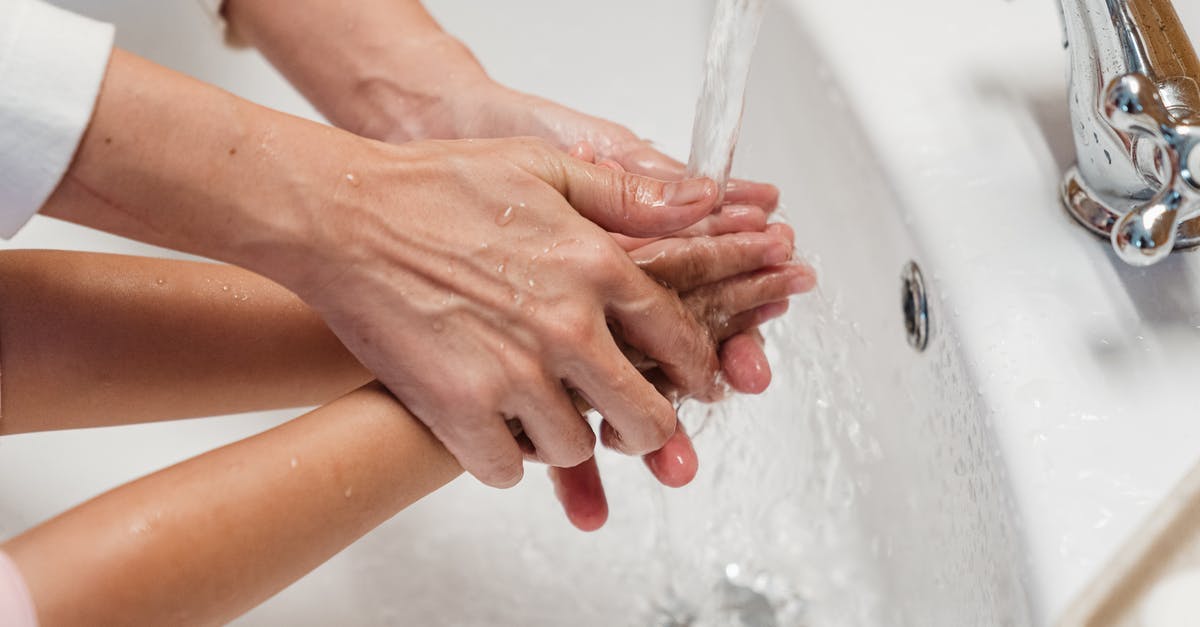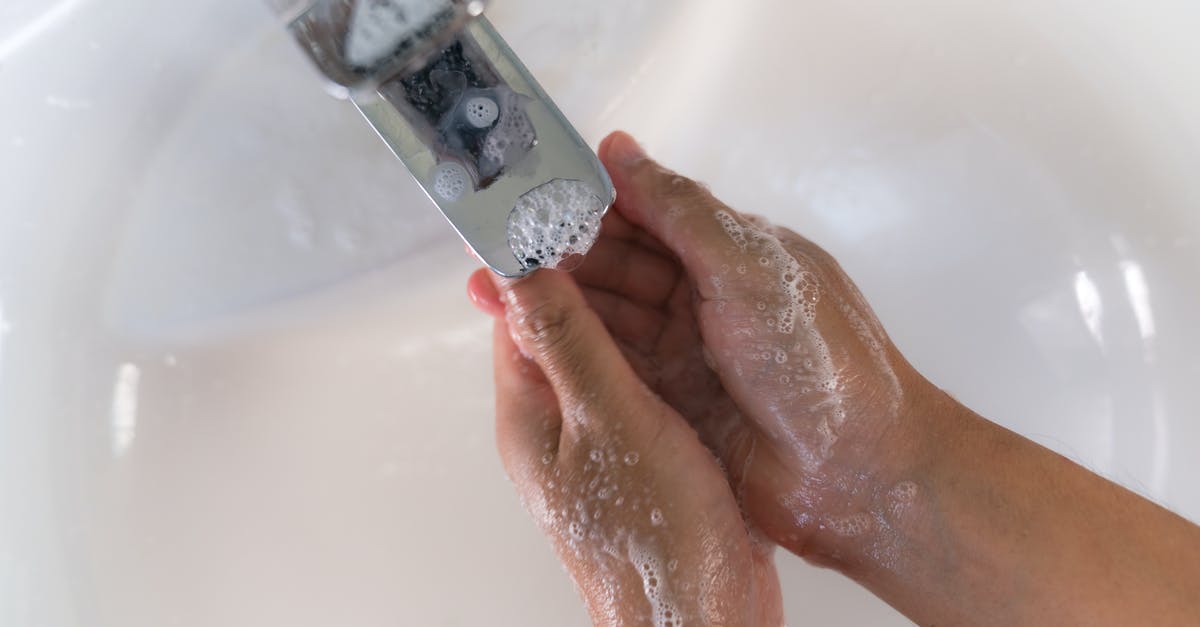How to prevent pureed blueberries from gelling?

I have a sparkling new ice cream machine. The first batch, Philadelphia-style plain vanilla ice cream, worked perfectly. I decided to try a sorbet, and made Lebovitz's Blueberry-banana sorbet, but used less blueberries than in the recipe, because I didn't have enough. I cooled the base in the fridge for 9 hours.
When I took it out to churn it, it was gelled, I assume due to the pectin in the blueberries. I whipped it a bit with a whisk, which broke it up into small lumps, but didn't really returned it to liquid. When I filled it in the ice cream maker, I discovered that it didn't have enough torque. The mass climbed up the dasher, and started rotating with it as one big lump. Eventually (after over an hour, although the instructions say that half a portion of well-chilled base should only take 20 min) it was ready. The texture was OK, not really crystalized, and definitely no lumps, but still I feel that it would have worked better if the mass had been liquid instead of semisolid from the beginning.
What can I do to prevent the blueberries from gelling during the chilling phase next time?
I used 1 banana (90 g peeled), 125 g fresh blueberries, 50 g sugar, 90 g water, and 7 g lemon juice. Everything thrown into a blender and pureed, no heating. Then chilled for 9 hours in the fridge before churning.
Best Answer
Blueberries, and especially underripe blueberries, have a lot of pectin. Blueberries have about .4g per 100g compared to apples which have .5g. As you suspected this is almost definitely causing the problem. Many blueberry jam recipes consist of just heating pureed blueberries with sugar and acid- no added pectin needed.
When you heated your pureed blueberries the pectins dissolved out of the cell walls and developed a negative charge that would keep them from gelling. The acid in your recipe, as well as the sugar, created perfect conditions for those pectins to re-tangle and gel.
Solutions to this problem would be:
- Use riper blueberries- ripe blueberries are lower in pectin.
- Use less sugar
- Add less acid
Obviously the last two suggestions are easier but will change the flavor of the recipe somewhat.
You could also add less fruit but, as you noticed, a little pectin goes a long way. I fear you would have to drastically reduce the amount of fruit which would be sad.
An interesting paper about pectin says in reference to LM pectins: "The presence of acetyl groups prevents gel formation with calcium ions but gives the pectin emulsion stabilising properties."
Of HM pectins it says: "Acetyl groups prevent gelation and the DM within the group of high methoxyl pectins determines the setting temperature of a gel."
Other papers point out that the more acetic acid that can be extracted from a fruit the poorer the gelling properties of its pectin.
Wikipedia concurs that acetylation prevents gelling of pectin. Acetylation of salicylic acid to make aspirin is done with Acetic anhydride. If you could get your hands on this compound it seems likely it would drastically decrease the gelling ability of your pectins.
I included this last suggestion for the sake of the anonymous hordes on the internets because, as Acetic anhydride will react with water in the air to form acetic acid, it reeks of vinegar. And everyone knows that you hate that smell.
Pictures about "How to prevent pureed blueberries from gelling?"



Quick Answer about "How to prevent pureed blueberries from gelling?"
Why do blueberries congeal when blended?
On gelling: If your smoothie is gelling, perhaps you added chia or flax seeds too far in advance. Blueberries, which are very high in natural pectin, are also a culprit of jelly-like smoothies. A re-blend with a little bit of ice and some creamy liquid (if appropriate for the flavor profiles) will likely do the trick.How do you preserve blueberry puree?
STORAGE: Refrigerate leftover blueberry puree in an airtight container for up to 48 hours. Alternatively, transfer the puree into ice-cube trays and freeze. Once fully frozen, quickly pop them all out and place into a freezer bag or container. Return to the freezer and store for 2-3 months.Can you freeze pureed blueberries?
Tips for Making the Best Blueberry PureeTo freeze, portion puree into an ice cube tray and freeze for 4-6 hours or until frozen. Transfer to a freezer storage bag for up to 3 months. To thaw from frozen, place a cube into an airtight container and allow to thaw overnight in the fridge.How long does blueberry puree last?
Fresh blueberry puree should be stored in the fridge and used within 3-4 days. For longer storage, I recommend freezing the puree in an airtight container. I like using a silicone ice cube tray or freezer safe jars because they make it easier to thaw smaller amounts for serving to babies.Blueberry Sauce Recipe Demonstration - Joyofbaking.com
More answers regarding how to prevent pureed blueberries from gelling?
Answer 2
A couple simple, practical things to go with Sobachatina's suggestions:
First, you can break up the gel with a serious blender, not just a whisk. If it gets liquid really flowing, it'll disintegrate pretty well.
Even easier, though: just don't chill it, at least not that much. What exactly you can get away with depends on your ice cream maker, the temperature of your freezer, and the ambient temperature, but in general, it sounds like your situation can handle this. Make sure everything's cool before blending it (keep your fruit in the fridge), then blend it and put it straight into the ice cream maker. I've done this with several things, probably with an ice cream maker like yours and a much warmer apartment.
Note that you should definitely not try this with a hot custard (i.e. French-style ice cream); it's unlikely your ice cream maker can handle that. I'd also suggest trying it with previously-chilled ingredients (blended fruit from the fridge, like above) before trying it with something that's actually room temperature. If you have the frozen canister style ice cream maker, and you push it too far, it's not fun. At that point you can try to salvage it by alternating a couple minutes in the freezer and a couple minutes churning - but you'll probably still get some frozen on the sides. The safe solution at that point is just to scoop it out, refreeze the canister, and start over a few hours later.
Answer 3
In my experiments with pureed blueberries as a photosensitizer in optical detectors, I've experienced that the pectin tends to leave the top fluid phase when centrifuged a lot. 4000G, for 60 minutes, has done the trick - at least I don't experience gelling of my samples.
Admittedly, it's of somewhat limited usefulness, but you never know.
Answer 4
The enzyme, Pectinase AKA Polygalacturonase, might prove useful to you. Apparently, winemakers use it to reduce cloudiness. You can buy it online.
Sources: Stack Exchange - This article follows the attribution requirements of Stack Exchange and is licensed under CC BY-SA 3.0.
Images: Ketut Subiyanto, Sorapong Chaipanya, Sorapong Chaipanya, Karolina Grabowska
